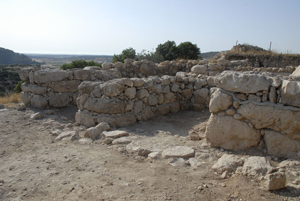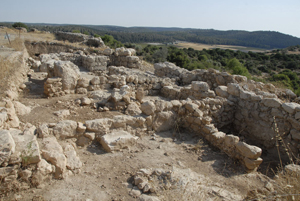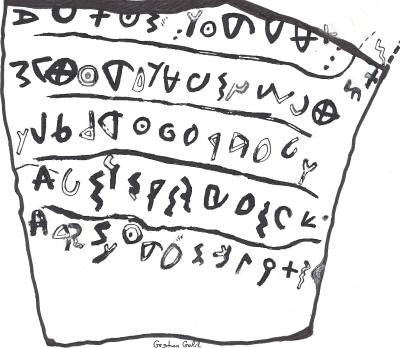A year and a half ago a 10th-century ostracon (pottery sherd with an ink inscription) was discovered at Khirbet Qeiyafa overlooking the Elah valley, south of Jerusalem and west of Hebron. The inscription has now been published and proves to be the earliest known example of Hebrew writing. It advocates care for widows and orphans and encourages the king—who at that time had the responsibility of curbing social inequality—to be involved in improving Israelite society. The inscription is similar in content to biblical scriptures such as Exodus 23:2, Psalm 72:4, Isaiah 1:17, and others, but according to the translator, Professor Gershon Galil of the Department of Biblical Studies at the University of Haifa, it is not copied from any one biblical text. The ostracon thus demonstrates that at least some of the biblical scriptures were composed hundreds of years before the dating of the composition of the Bible in much of contemporary academic research.

Situated on the west side of the Elah Valley, the valley where David fought Goliath, Kh. Qeiyafa (also called “The Elah Fortress”) was a small but important site on the road to Jerusalem. It was a border fortress strategically located between the kingdoms of Philistia to the west and Israel to the east. Credit: Khirbet Qeiyafa Archaeological Project.
Since the inscription was clearly written by a scribe, Galil concludes: “It can now be maintained that it was highly reasonable that during the 10th century BCE, during the reign of King David, there were scribes in Israel who were able to write literary texts and complex historiographies such as the books of Judges and Samuel.” He added that the complexity of the text, along with the impressive fortifications revealed at the site, refute theories that attempt to deny the existence of the Kingdom of Israel at that time.

Two of the four chambers of the 10th-century BC gate at Kh. Qeiyafa. Credit: Michael Luddeni.

Building where the inscribed sherd was found on the north side of the four-chamber gate. Credit: Michael Luddeni.

Tenth-century BC Hebrew text discovered at Kh. Qeiyafa July 8, 2008. It has been subjected to detailed photographic enhancement in order to clarify the faded text. Credit: Khirbet Qeiyafa Archaeological Project.

Drawing of the inscription on the Qeiyafa Ostracon. Courtesy of the University of Haifa.
Dr. Scott Stripling describes the gate and surroundings at Khirbet Qeiyafa.
http://www.israelnationalnews.com/News/News.aspx/135432
http://www.haaretz.com/hasen/spages/1141247.html
http://www.eurekalert.org/pub_releases/2010-01/uoh-mah010710.php
http://www.christianitytoday.com/ct/2010/januaryweb-only/13-11.0.html?start=2